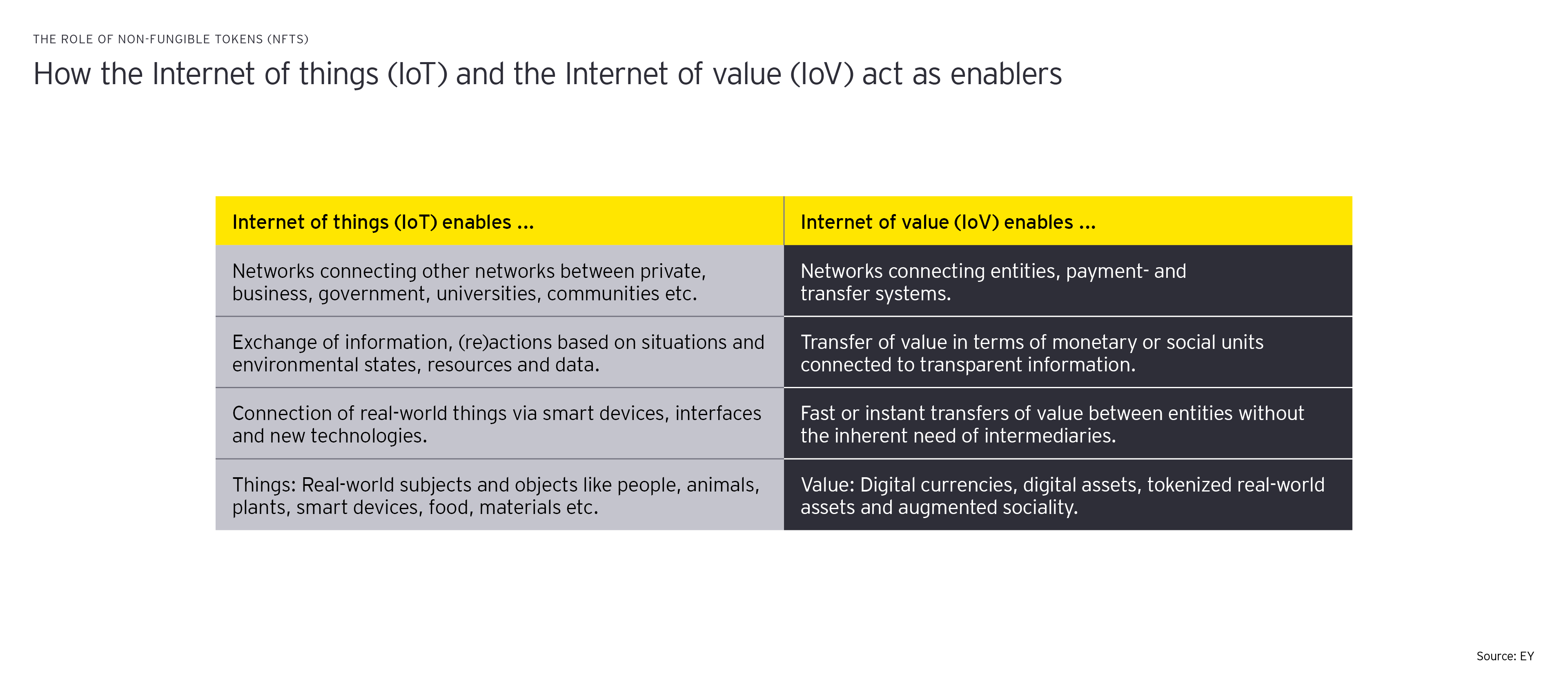EY refers to the global organization, and may refer to one or more, of the member firms of Ernst & Young Limited, each of which is a separate legal entity. Ernst & Young Limited is a Swiss company with registered seats in Switzerland providing services to clients in Switzerland.
In the internet of value, non-fungible tokens (NFTs) are a powerful enabler, but what are they exactly and how do they work? In simple terms, NFTs are a unit of data stored on a blockchain that certifies the uniqueness and ownership of digital assets. In other words, NFTs are a kind of digital “certificate of authenticity” for unique digital items that are secured and verified by blockchain technology. NFTs are one-of-a-kind, indivisible, and immutable. They can also be tied to physical items such as art, cars or clothes, which creates a link between the virtual and physical world. NFTs facilitate the ownership of digital assets, which is in turn enabled by decentralized cryptocurrencies (fungible tokens) as a means to pay and trade in virtual worlds.









